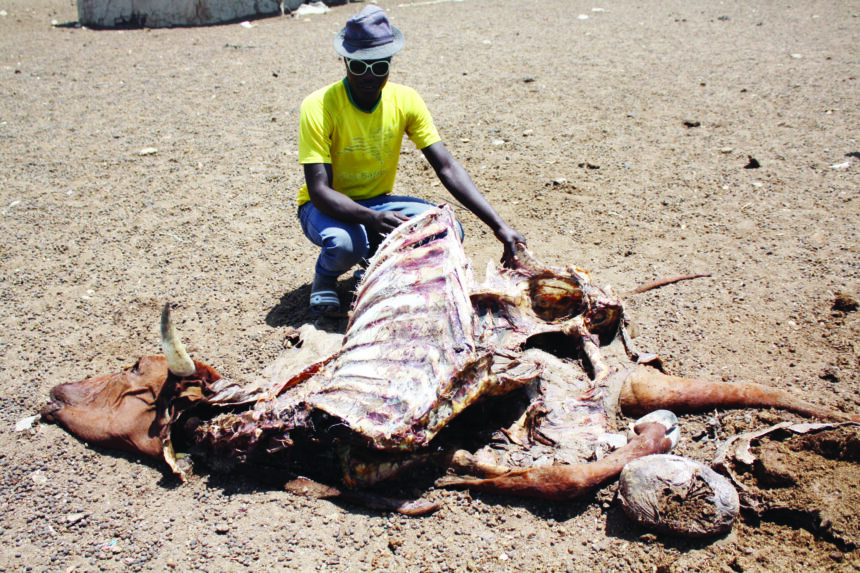Namibia is grappling with a funding shortfall of about N$482 million to shield 1.26 million drought-stricken citizens from a looming hunger crisis.
This was revealed by Prime Minister Saara Kuugongelwa- Amadhila during the 9th Session of the Africa Regional Platform for Disaster Risk Reduction Conference held in the capital this week.
She said of the planned N$1.6 billion drought relief programme, the government is currently facing a funding gap of about N$482 million to reach an additional 373 276 households, which translates into 1.26 million people, or 41% of the country’s population.
“Therefore, the government is appealing for assistance. Positive responses to our appeal for assistance have been received from development partners, for which we are grateful. Assistance comes in the form of cash and in-kind donations of food and equipment made directly to the government, and donations in cash and kind made through UN agencies. The SADC region is currently going through one of the worst droughts in recent years, induced by the El Niño phenomenon.
“This situation resulted in the threatened lives and livelihoods for about 58 million people, with food and water security severely compromised. This led to most member states declaring a state of disaster on account of drought. The region subsequently launched a joint appeal for assistance to supplement their national responses,” she noted.
In total, Namibia has set a budget of N$1.6 billion to roll out a multi-faceted drought relief programme, which includes food assistance to vulnerable households, cash incentives for livestock farmers, and water provision for drought-hit communities.
In May, President Nangolo Mbumba declared a state of emergency on the protracted drought, which has seen the country’s aggregated cereal production of white maize, sorghum, pearl millet and wheat decreasing by 53%, while dam levels countrywide have dropped by 69.7%.
As a result of the diminishing crop output and declining dam levels, there has been a significant deterioration in household food security in various regions of the country.
Although the government has since late last year continued rolling out drought aid to farmers and households countrywide, limited funds and competing priorities have somewhat stalled efforts to reach all affected households.
At the continental level, the premier added that the situation around climate change is worsening and continues to become unpredictable for most countries, which she said calls for better preparedness and progressive policy interventions.
“Africa is on the frontline of the climate crisis and faces a multitude of disasters, from relentless climate extremes to environmental degradation. Of late, the continent has witnessed severe disasters, including tropical cyclones, floods, droughts and veld fires, which have resulted in significant economic losses, displacement of livelihoods, and the loss of precious lives.”
Worrying statistics
In its July/September 2024 report, the Integrated Food Security Phase Classification (IPC) stated that about 1.15 million people, which is 38% of the country’s population, were classified in IPC Phase 3 (Crisis) or above, necessitating urgent humanitarian assistance to mitigate food consumption gaps and protect livelihoods.
The analysis was conducted in three phases, with the first phase in October 2023, the second between April and June 2024, and the current phase from July to September 2024.
Despite slight improvements, the food security situation is expected to deteriorate during the upcoming lean season (October 2024-March 2025), affecting 1.26 million people (41%) due to anticipated seasonal price increases.
The IPC report attributes the ongoing crisis to several key factors, including climate shocks, particularly the impact of El Niño, which has led to erratic rainfall and prolonged drought, severely affecting crop and livestock production across all 14 regions.
The report also highlights deteriorating livestock conditions, with some regions such as Kunene facing significant livestock deaths due to disease outbreaks and the poor condition of pastures.
It warned that national food levels are critically low, with silos holding just 15% of their total capacity as of June 2024, further underscoring the severity of the crisis.
Recommendations
The report further made various key recommendations to improve food availability, which included providing drought-resistant seeds and modern agricultural training to communal farmers, increasing capacity-building initiatives for agricultural extension officers, and expanding hydroponic fodder production across all regions.
It likewise recommended that the government continues monitoring key factors such as staple commodity prices, inflation impacts, seasonal rainfall patterns and the potential effects of La Niña to mitigate the crisis, and ensure timely and effective humanitarian assistance.
-ohembapu@nepc.com.na


